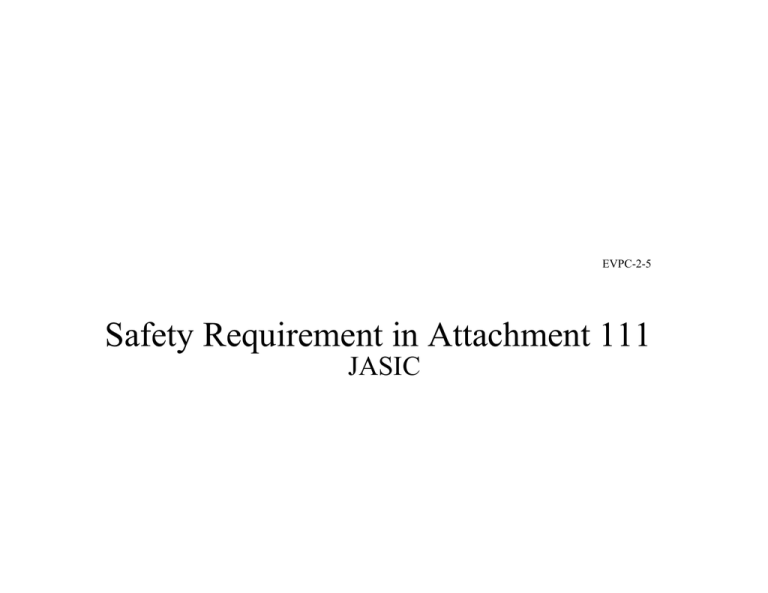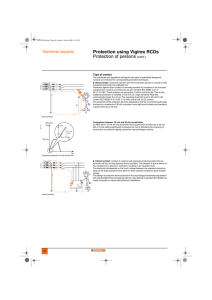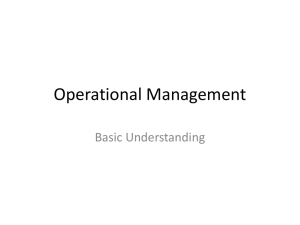Safety Requirement in Attachment 111
advertisement

EVPC-2-5 Safety Requirement in Attachment 111 JASIC 1.Electric Shock Pattern Exposed conductive part A or Electrical Chassis Exposed live part A Exposed live part B Exposed live part A Live part B Exposed conductive part B or Electrical Chassis CASE 1 Contact to 2 exposed live parts CASE 2 Contact with exposed live part and insulation loosen exposed conductive part Live part A Live part B Exposed conductive part B or Electrical Chassis CASE 3 Contact with 2 insulation loosen exposed conductive parts which are not potential equalized Note: Exposed conductive part : Conductive part which can readily be touched and which is not normally alive, but which may become electrically energized under fault conditions. Only when a person touches two of live parts, insulation lost exposed parts or electrical chassis whose electrical potential is different, it is hazardous. :No hazard possibility 2. Protection Method Protection Method :Hazardous (A) (B) (C) (D) (E) Protection against Direct Contact Protection against Indirect Contact Insulation Resistance Low Voltage Low Energy Exposed Conductive Parts Exposed Conductive Parts Exposed Conductive Parts Exposed Conductive Parts Exposed Conductive Parts Exposed Conductive Parts Exposed Conductive Parts Exposed Conductive Parts Exposed Conductive Parts Exposed Conductive Parts Exposed Conductive Parts Exposed Conductive Parts Exposed Conductive Parts Exposed Conductive Parts Exposed Conductive Parts Case 1 Case 2 Case 3 Protection against Electrical Shock - Combination of (A) and (B) Combination of (A) and (C) (D) (E) 3. .Concept of Physical Barrier Protection or : Insulated : Not Insulated Barrier or Enclosure (exposed conductive parts) : Potential Equalization electrical chassis Basic Idea of FMVSS 305 MG BAT DDC INV If the high voltage buses are isolated form the electrical chassis (and the exposed electroconductive barriers and enclosures), it is not electrical hazardous even if a human directly touches one high voltage bus. Concept of physical barrier option MG BAT DDC INV If a human cannot directly touch the high voltage buses, it is not electrical hazardous even if the isolation resistance cannot be maintained provided the exposed electroconductive barriers and enclosures are potentially equalized.. 4. .Structure of Japanese Regulation or exposed conductive parts : Insulated : Not Insulated : Potential Equalization electrical chassis MG BAT DDC INV MG BAT DDC INV MG BAT DDC INV 1-3-2 The resistance between all exposed conductive parts and the electrical chassis shall be lower than 0.1 ohm when there is current flow of at least 0.2 amperes. 1-3-3 Insulation resistance between the live parts and the electrical chassis shall have a minimum of 100 ohms per volt of the working voltage. 1-3-4 When there are exposed conductive parts that can be touched from the passenger compartment which do not satisfy the requirement of Paragraph 1–3–2, exposed conductive parts or electric chassis those which do not satisfy the requirements of Paragraph 1–3–3 shall be one position or none. MG BAT DDC INV MG BAT DDC INV * Direct contact to the live parts must be avoided in any case. 1-3-5 When the insulation resistance between live parts of the power train and the exposed conductive parts that can be touched from the passenger compartment do not satisfy the requirements of Paragraph 1–3–3 and when the insulation resistance between live parts of the power train and the electric chassis do not satisfy the requirements of Paragraph 1–3–3, the said exposed conductive parts shall satisfy the requirements of Paragraph 1–3–2. 1-3-6 When the insulation resistance between live parts of the power train and the exposed conductive parts that can be touched from the passenger compartment do not satisfy the requirements of Paragraph 1–3–3 and the insulation resistance between live parts of the power train and the electric chassis satisfies the requirements of Paragraph 1–3– 3, exposed conductive parts which doesn't satisfy the requirements of Paragraph 1–3–2 shall be one or none.



